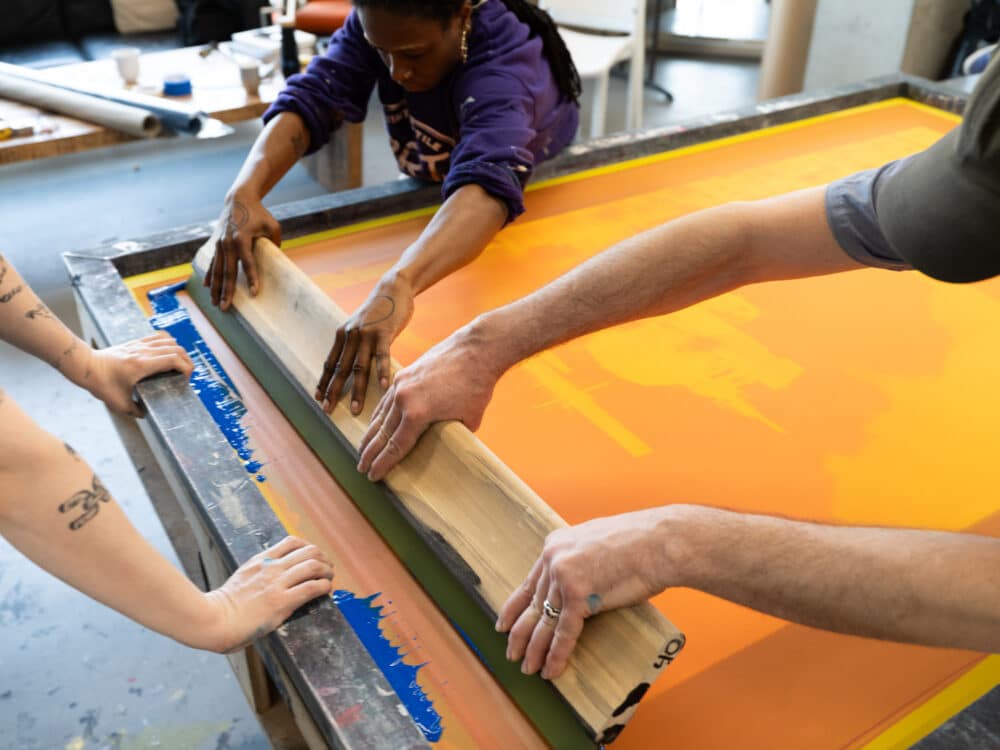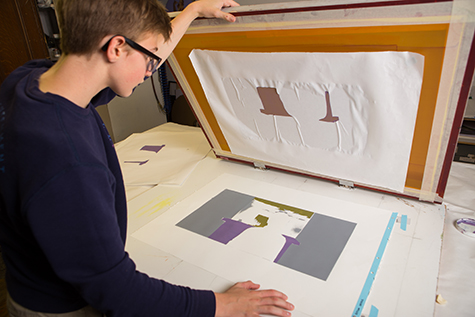ChatGPT said: 10:9 Design Abilene: your community choice for custom apparel and branding
The Essential Overview to Understanding Screen Printing and Its Versatile Utilizes
Screen printing has a rich background that goes back to ancient times, advancing into an advanced strategy used throughout numerous industries today. This overview discovers the details of the screen printing process, outlining its applications in marketing, style, and home decoration - 10:9 Design Abilene. Comprehending these principles can open creative potential for both imaginative and business projects. The following sections will certainly disclose vital ideas and strategies to enhance one's screen printing undertakings
The History of Screen Printing
Screen printing has roots that trace back centuries, its advancement mirrors the imaginative and technical improvements of various cultures. Stemming in old China, the strategy was at first made use of for enhancing fabrics and later spread to Japan, where it ended up being important to Ukiyo-e woodblock printing. The approach moved to Europe in the 18th century, where it got appeal amongst craftsmens and commercial printers. The invention of image emulsion in the 20th century revolutionized screen printing, enabling more intricate layouts and higher efficiency. Musicians like Andy Warhol even more drove its popularity, making use of the tool to create renowned jobs that mixed commercialism and fine art. By the late 20th century, screen printing had actually developed itself as a functional technique, used in fashion, advertising and marketing, and art. Today, it remains to advance, incorporating electronic innovation and increasing its applications throughout different industries.
The Screen Printing Process Explained
Screen printing changes artistic visions right into substantial layouts through a series of accurate steps. Initially, an image is created and after that transferred onto a screen, typically made from fine mesh fabric extended over a frame. A light-sensitive emulsion is put on the screen, which is revealed to light, solidifying in locations not covered by the picture. After rinsing the unhardened solution, a pattern is created.
Next off, the screen is put over the substratum, whether it be material, paper, or one more product. Ink is then pushed through the open locations of the pattern utilizing a squeegee, transferring the layout onto the substrate below. This procedure can be duplicated for multiple shades, requiring different screens for each and every color. Lastly, the printed item is cured utilizing warm to assure the ink sticks effectively, causing a resilient, dynamic design ready for usage.
Sorts Of Screen Printing Techniques

In addition, specialty strategies, such as discharge screen printing, get rid of color from the textile to create softer prints, while aluminum foil screen printing uses metallic foil to attain a shiny coating (10:9 Design reviews). Each method uses unique features, accommodating different imaginative requirements and production ranges, inevitably broadening the possibilities within the screen printing domain name
Applications of Screen Printing in Various Industries

Furthermore, the signs and advertising and marketing industries use screen printing for creating eye-catching displays and banners. This technique enables bold colors and detailed styles that catch focus. In electronic devices, screen printing is used for applying conductive inks to circuit card, important for element connections. Furthermore, the home decoration sector accepts screen printing to produce unique layouts on fabrics and wall surface art. In general, screen printing more info works as a vital device across varied areas, improving products with customized and visually appealing graphics.
Tips for Successful Screen Printing Projects
While undertaking a screen printing project, mindful attention to detail can substantially improve the last end result. Choosing high-quality materials is vital; this includes the screen, inks, and substrates. Using ideal mesh matters can impact ink deposition and information resolution. Prep work is equally important; detailed cleaning of screens and correct direct exposure times assure crisp prints.
Next off, precise registration is important for multi-color prints. Utilizing alignment tools can help accomplish precise layering. Additionally, screening prints on scrap products prior to manufacturing assists recognize prospective concerns without squandering sources.

Often Asked Questions
What Materials Are Best for Screen Printing on Fabric?
Cotton and polyester blends are ideal for screen printing on fabric as a result of their longevity and ink absorption. In addition, specialty fabrics like silk or canvas can create distinct appearances and finishes, improving the overall style quality.
Exactly how Do I Clean and Maintain Screen Printing Devices?
To maintain and cleanse screen printing tools, one must frequently wash screens with ideal solvents, evaluate squeegees for wear, oil moving components, and shop all products in a dry, dust-free atmosphere to extend their life-span.
What Are the Ecological Influences of Screen Printing?
Screen printing can have substantial environmental influences, consisting of chemical waste from solvents and inks, water usage throughout cleaning processes, and power consumption. Green materials and lasting techniques are essential for decreasing these negative results.
Can Screen Printing Be Done in your home Properly?
Screen printing can be successfully done at home with the ideal products and techniques. Hobbyists can develop top quality prints, though success relies on their ability degree, equipment, and understanding of the process involved.
What Are the Expenses Connected With Beginning a Screen Printing Organization?

Beginning a screen printing company involves costs for tools, products, and work space. First costs usually range from a couple of hundred to numerous thousand bucks, depending upon the scale, top quality of machinery, and wanted production capability.
Screen printing has an abundant background that dates back to ancient times, progressing into an innovative strategy made use of throughout numerous industries today. Another strategy, rotary screen printing, utilizes cylindrical screens, assisting in continual printing on textile rolls, thus improving efficiency for massive manufacturings. In addition, specialized techniques, such as discharge screen printing, remove color from the material to create softer prints, while foil screen printing uses metal aluminum foil to achieve a glossy coating. In the fashion sector, screen printing is widely made use of to develop vibrant styles on clothing, making it possible for brand names to showcase their one-of-a-kind styles. Cotton and polyester blends are ideal for screen printing on fabric due to their sturdiness and ink absorption.